Several alcohol brands have pivoted their business operations to provide essentials for people on the front-line.
- Diageo has pledged more than eight million bottles of sanitizer to distribute among seven countries.
- BrewDog has started making hand sanitizer and giving bottles away to charities and anyone in the community who needs them.
- Pernod Ricard USA said it would switch all of its production sites to make hand sanitizer and work with the US government to distribute the bottles.
These businesses quickly assessed if they had the capability and capacity to help prevent the spread of the virus.
But there’s another way that alcohol brands can help.
Alcohol is a traditionally social product. We gather in pubs, clubs and bars. We hold BBQs and share bottles of wine with friends around their place. Traditionally, the social content that promotes alcohol will feature these themes. But alcohol brands are having to adapt to the new reality we’re all living in.
Alcohol brands need to encourage social distancing while also keeping their customers engaged with the brand. They need to promote the brand in a way that doesn’t encourage excessive consumption or drinking to deal with emotional turmoil.
How are alcohol brands adapting their social content?
- Alcohol brands are supporting virtual gatherings. In China, JD.com worked with Budweiser and Remy Cointreau to sell drinks via a live stream of virtual clubbing. They realized that offline social interactions generated a lot of alcohol sales, so they wanted to replicate this online. The streams provided the brands with insight into what consumers thought about them, and they provided a way for people to replicate the social aspect of clubbing without leaving their homes. In the US, Coors Light promoted a pre-draft happy hour using #TakeTimeToChill. Fans were able to chat with football commentator, Kirk Herbstreit, over on Instagram live.
- Alcohol brands are finding creative ways to support the industry and its workers. Crook & Marker used social media to launch its #CheersUp campaign. It wanted people to post selfies or videos of themselves offering a toast on Instagram or Facebook using #CheersUp. Crook & Marker promised to donate $1 to the USBG Bartender Emergency Assistance Program for every post up to $10,000. Other brands have promoted similar initiatives, such as Bacardi and its #RaiseYourSpirits campaign and Budweiser UK’s #SavePubLife.
- Alcohol brands are promoting user-generated content. Twitter was impressed with Guinness’ lockdown-inspired ad campaign in late March – only it turned out to be an idea created by someone for @OneMinuteBriefs (where creative-types share ad ideas). Guinness loved the image and shared it on social media. It’s a great way to make people feel included as part of a community around the brand.*
- Alcohol brands are being human and writing with empathy. Baileys’ Twitter account has always been very casual in tone and content, but during the lockdown, the social team is posting tweets that many of us can relate to. It’s helping to spark discussion and engagement.*
- Alcohol brands are nurturing their brand communities. Now that many of us are working virtually, we’re seeing teams, friends and family having everything from dinner parties to pub quizzes over video calls. It’s a great way to have fun with friends and maintain a great company culture. Some brands in the alcohol industry are using a similar tactic on social media. Whiskey producer, Bruichladdich Distillery, invited its followers to join a Nextflix watch-along of The Life of Brian (using the Netflix party extension). The brand wanted to follow it up with a post-movie Q&A session on Instagram. Meanwhile, beer brand, Stella Artois, is encouraging people to have video drinks with friends using #StellaDigitalCheers.
All brands have to review their social media campaigns in light of the new circumstances we’re living through.
That doesn’t mean they shouldn’t be on social media at all. People want to be entertained, and they want to find a way to replicate the social experience they’d get in the bars, pubs and clubs that they’d usually go to.
It’s in the best interest of alcohol brands to do what they can to support the industries they work with, and invest in community building, while people continue to live in lockdown.
You can read more about how alcohol brands can manage social media here.
*Note that The Social Element works with Diageo, Guinness and Bailey’s parent company.






Leave a Reply